| Columns Retired Columns & Blogs |
Paradigm Reference Signature S2 loudspeaker Measurements
Sidebar 3: Measurements
My estimate of the Reference Signature S2's voltage sensitivity agreed with the specification at 88.2dB(B)/2.83V/m, which is 1dB higher than the average of the speakers I have measured. Its impedance (fig.1) dips briefly below 4 ohms in the lower midrange, reaching a minimum of 3.6 ohms at 180Hz, but stays above 8 ohms for much of the audioband. Even with a combination of 5.2 ohms impedance and –40º capacitive phase angle in the upper bass at 112Hz, the Paradigm will not be too demanding a load for its partnering amplifier to drive. A slight wrinkle at 200Hz in the impedance traces is associated with a resonant mode detectable in the cabinet panels at the same frequency (fig.2), but its effect is low in level. The rigid, well-braced cabinet is otherwise acoustically inert.
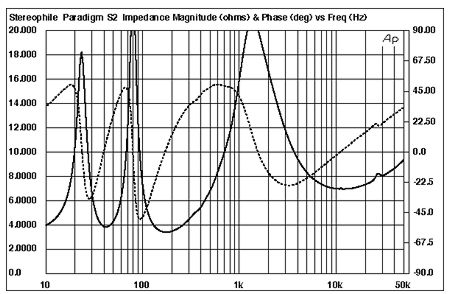
Fig.1 Paradigm Reference Signature S2, electrical impedance (solid) and phase (dashed). (2 ohms/vertical div.)
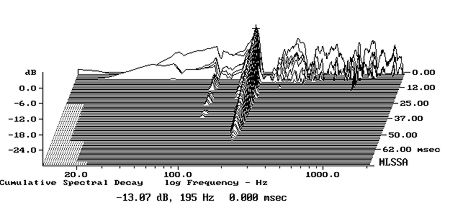
Fig.2 Paradigm Reference Signature S2, cumulative spectral-decay plot calculated from the output of an accelerometer fastened to the cabinet's top panel (MLS driving voltage to speaker, 7.55V; measurement bandwidth, 2kHz).
The saddle in the impedance magnitude trace centered at 40Hz indicates the tuning frequency of the reflex port. The corresponding minimum-motion point at the same frequency can be seen in the nearfield woofer response in fig.3, with the port's output peaking in the same region. The port response rolls off smoothly above 50Hz, but I was alarmed to see a high-Q resonance present just above 800Hz. This aberration is severe enough to create a suckout at the same frequency in the woofer's response.
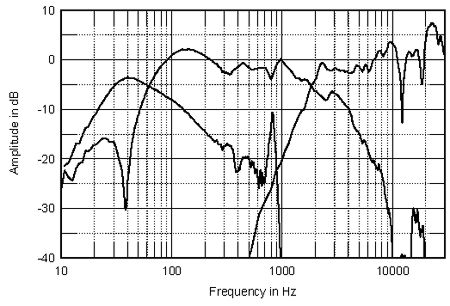
Fig.3 Paradigm Reference Signature S2, acoustic crossover on tweeter axis at 50", corrected for microphone response, with the nearfield woofer and port responses plotted below 300Hz and 1kHz, respectively.
The woofer's output shows slightly more of a boost in the upper bass in fig.3 than I expected from the nearfield measurement technique, implying a slightly underdamped bass alignment that, as I heard, will tend to compensate for the small speaker's lack of low bass. Higher in frequency, the woofer crosses over to the tweeter at 1.8kHz as specified, but with a shallower rollout for an octave or so above that frequency than expected from the specified third-order slope. The tweeter comes in with a third-order slope and is flat for the first octave and a half in its passband, but has a shelved-up response in its top octave, broken up by some interference effects.
Fig.4 shows how these individual outputs sum on the tweeter axis in the farfield, averaged across a 30º horizontal angle. Again, the S2's upper bass is a little more exaggerated than is warranted for strictly neutral behavior, but the balance overall is impressively flat. However, a slight suckout can still be seen at 800Hz—the frequency of the resonant mode in the port's output—and the tweeter is slightly too high in level compared with the speaker's midrange level. The measurements that contributed to this graph were taken with the grille in place. The grille's frame helps create an obstruction-free acoustic environment, particularly for the tweeter. Removing the grille increases the HF driver's mid-treble output, to the detriment of overall high-frequency smoothness (fig.5).
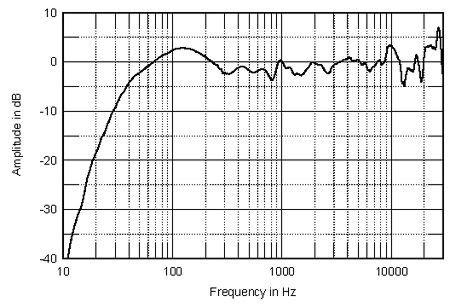
Fig.4 Bryston 3B-ST, THD+noise vs frequency at (from top to bottom at 10kHz): 40W into 2 ohms, 20W into 4 ohms, 8.9V into simulated speaker load, and 10W into 8 ohms (right channel dashed).
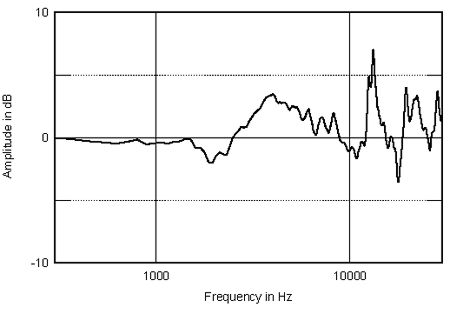
Fig.5 Paradigm Reference Signature S2, effect on tweeter-axis response of removing the grille (5dB/vertical div.).
The Signature S2's horizontal radiation pattern is shown in fig.6, with the tweeter-axis response subtracted from all the traces to reveal the speaker's true behavior. Other than a slight lack of off-axis energy between 1 and 2kHz, presumably due to the slightly oversized woofer, the contour lines below 8kHz in this graph are both even and evenly spaced, correlating with the stable, well-defined stereo imaging I noted in my auditioning. Above 10kHz, the off-axis ridge is actually due to the on-axis suckout centered on 12.8kHz in fig.4 filling in to the speaker's sides. In the vertical plane (fig.7), a lack of energy develops in the low treble more than 10º below the tweeter axis, with too much energy in the same region apparent at angles more than 5º above that axis, confirming the need to use stands with this speaker that place the listener's ears in the vicinity of the tweeter.
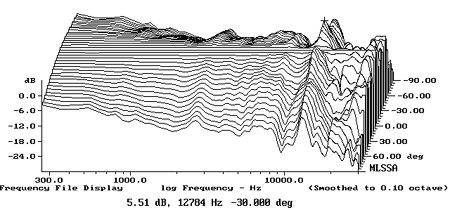
Fig.6 Paradigm Reference Signature S2, lateral response family at 50", normalized to response on tweeter axis, from back to front: differences in response 90–5º off-axis, reference response, differences in response 5–90º off-axis.
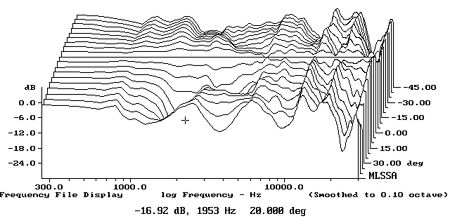
Fig.7 Paradigm Reference Signature S2, vertical response family at 50", normalized to response on tweeter axis, from back to front: differences in response 45–5º above axis, reference response, differences in response 5–45º below axis.
Fig.8 shows the response of the Signature S2s in my listening room, averaged for each speaker in a vertical window centered on the position of my ears. The graph is impressively flat from 80Hz to 20kHz, though with slight excesses of upper-bass and mid-treble energy apparent. The former goes some way toward compensating for the S2's lack of mid- and low-bass output, while the latter is not unexpected, given my feelings about the speaker's slightly forward treble balance.
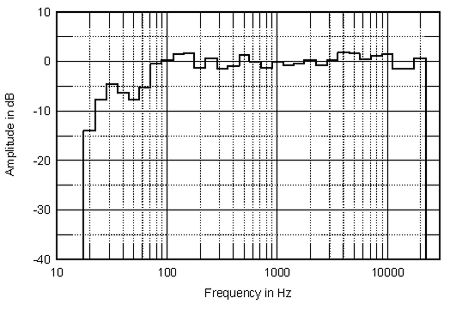
Fig.8 Paradigm Reference Signature S2, 1/3-octave, spatially averaged response in JA's listening room.
There are no surprises in the Paradigm's step response on the tweeter axis (fig.9), which reveals that both drive-units are connected with the same, positive, acoustic polarity. The slight discontinuity at the 3.7ms mark suggests that the best frequency-domain integration between the units actually occurs just below the tweeter axis, again confirming the need for high stands. The cumulative spectral-decay plot (fig.10) is generally clean in the treble, though with some low-level hash in the top octave, associated with the interference effects noted earlier. There is also a ridge of delayed low-level energy apparent at 2.3kHz, correlating with the small ripples seen in the step response. This may well be due to a residual mode in the woofer cone.
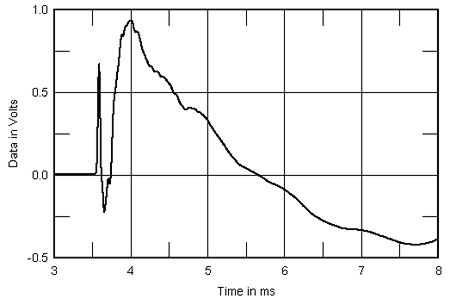
Fig.9 Paradigm Reference Signature S2, step response on tweeter axis at 50" (5ms time window, 30kHz bandwidth).
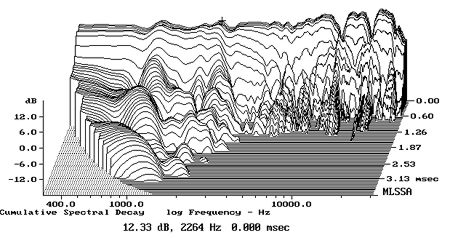
Fig.10 Paradigm Reference Signature S2, cumulative spectral-decay plot at 50" (0.15ms risetime).
Overall, its measurements suggest that the Reference Signature S2 is another in the series of well-engineered loudspeakers emerging from the design studio led by Paradigm's co-owner Scott Bagby.—John Atkinson
- Log in or register to post comments




































